#franklin mosley
Text
youtube
#pittsburgh savoyards#2022#gilbert and sullivan#i am the very model of a modern major-general#pirates of penzance#franklin mosley#Youtube
16 notes
·
View notes
Text
Hogwarts Mystery full name headcanons
Amelia Sarah Goldstein (mc)
Jacob Simon Goldstein
Rowan Khanna
Penelope Marie Haywood
Benjamin Joshua Copper
Charles Otto Weasley
Chiara Elizabeth Lobosca
Skye Victoria Parkin
Murphy Franklin McNully
Orion William Amari
Elizabeth Jane Tuttle
Barnaby Cecil Lee
Nymphadora Bertha Tonks
Tulip Mary Karasu
Diego Esteban Caplan
Andre François Egwu
Erika Sophie Rath
Talbott Robin Winger
Merula Verucca Snyde
Charlotte Ariadne Mosley (oc)
Ismelda Lauren Murk
#harry potter hogwarts mystery#hphm#hphm headcanon#hphm mc#ben copper#penny haywood#charlie weasley#chiara lobosca#charlie mosley#skye parkin#murphy mcnully#orion amari#liz tuttle#barnaby lee#diego caplan#andre egwu#talbott winger#erika rath#merula murk#Ismelda Murk#Amelia Goldstein#hphm Jacob
47 notes
·
View notes
Text
youtube
he's the best major general
The actor's name is Franklin Mosley and this is the Pittsburgh Savoyards' production of Pirates of Penzance
#honestly I think this is my favorite performance of the song ever#the energy!!!#the commitment to the choreography!!!!#ORANGE!!#gilbert and sullivan#pirates of penzance#musical theatre#operetta#please watch this it will bring you joy#also I've never seen a major general of color and this makes me so so happy#and they cast 2 major generals for this production and I am so glad this is the one that was uploaded!!!!!#musicals#Youtube
17 notes
·
View notes
Text
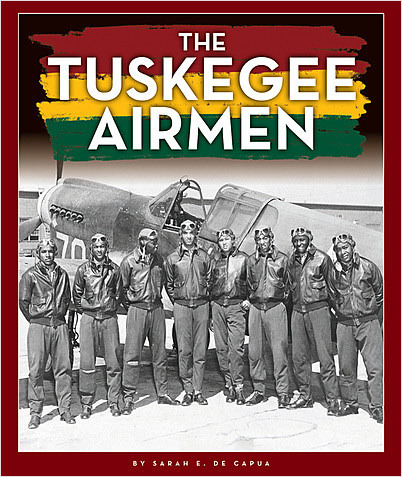
The Tuskegee Airmen were a group of African-American and Caribbean-born military pilots who fought in WWII. They formed the 332nd Fighter Group and the 477th Bombardment Group of the Army Air Forces. The name applies to the navigators, bombardiers, mechanics, instructors, crew chiefs, nurses, cooks, and other support personnel.
All African American military pilots who trained in the US trained at Moton Field, the Tuskegee Army Air Field, and were educated at Tuskegee University. The group included five Haitians from the Haitian Air Force and one pilot from Trinidad. It included a Hispanic or Latino airman born in the Dominican Republic.
March 22, 1942 - The first five cadets graduate from the Tuskegee Flying School: Captain Benjamin O. Davis, Jr. and Second Lieutenants Mac Ross,
Charles DeBow, L.R. Curtis, and George S. Roberts. They will become part of my the famous 99th Pursuit Squadron. List of Tuskegge Airmen.
Paul Adams (pilot)
Rutherford H. Adkins
Halbert Alexander
William Armstrong
Lee Archer
Robert Ashby
William Bartley
Howard Baugh
Henry Cabot Lodge Bohler
George L. Brown
Harold Brown
Roscoe Brown
Victor W. Butler
William Burden
William A. Campbell
Herbert Carter
Raymond Cassagnol
Eugene Calvin Cheatham Jr.
Herbert V. Clark
Granville C. Coggs
Thomas T.J. Collins
Milton Crenchaw
Woodrow Crockett
Lemuel R. Custis
Floyd J. Crawthon Jr
Doodie Head
Clarence Dart
Alfonza W. Davis
Benjamin O. Davis Jr. (C/O)
Charles DeBow
Wilfred DeFour
Gene Derricotte
Lawrence Dickson
Charles W. Dryden
John Ellis Edwards
Leslie Edwards Jr.
Thomas Ellis
Joseph Elsberry
Leavie Farro Jr
James Clayton Flowers
Julius Freeman
Robert Friend (pilot)
William J. Faulkner Jr.
Joseph Gomer
Alfred Gorham
Oliver Goodall
Garry Fuller
James H. Harvey
Donald A. Hawkins
Kenneth R. Hawkins
Raymond V. Haysbert
Percy Heath
Maycie Herrington
Mitchell Higginbotham
William Lee Hill
Esteban Hotesse
George Hudson Jr.
Lincoln Hudson
George J. Iles
Eugene B. Jackson
Daniel "Chappie" James Jr.
Alexander Jefferson
Buford A. Johnson
Herman A. Johnson
Theodore Johnson
Celestus King III
James Johnson Kelly
James B. Knighten
Erwin B. Lawrence Jr.
Clarence D. Lester
Theodore Lumpkin Jr
John Lyle
Hiram Mann
Walter Manning
Robert L. Martin
Armour G. McDaniel
Charles McGee
Faythe A. McGinnis
John "Mule" Miles
John Mosley
Fitzroy Newsum
Norman L Northcross
Noel F. Parrish
Alix Pasquet
Wendell O. Pruitt
Louis R. Purnell Sr.
Wallace P. Reed
William E. Rice
Eugene J. Richardson, Jr.
George S. Roberts
Lawrence E. Roberts
Isaiah Edward Robinson Jr.
Willie Rogers
Mac Ross
Robert Searcy
David Showell
Wilmeth Sidat-Singh
Eugene Smith
Calvin J. Spann
Vernon Sport
Lowell Steward
Harry Stewart, Jr.
Charles "Chuck" Stone Jr.
Percy Sutton
Alva Temple
Roger Terry
Lucius Theus
Edward L. Toppins
Robert B. Tresville
Andrew D. Turner
Herbert Thorpe
Richard Thorpe
Thomas Franklin Vaughns
Virgil Richardson
William Harold Walker
Spann Watson
Luke J. Weathers, Jr.
Sherman W. White
Malvin "Mal" Whitfield
James T. Wiley
Oscar Lawton Wilkerson
Henry Wise Jr.
Kenneth Wofford
Coleman Young
Perry H. Young Jr.
#africanhistory365 #africanexcellence
1 note
·
View note
Text
0 notes
Photo

Devil in a Blue Dress
directed by Carl Franklin, 1995
#Devil in a Blue Dress#Carl Franklin#movie mosaics#Denzel Washington#Don Cheadle#Jennifer Beals#Lisa Nicole Carson#Terry Kinney#Tom Sizemore#Mel Winkler#Walter Mosley
64 notes
·
View notes
Text
New series hailing from Apple Studios and UCP, and based on an acclaimed book by New York Times bestselling author David Grann, to be developed by Soo Hugh and co-showrun by Hugh and Mark Heyman
Apple TV+ today announced a series order for “The White Darkness,” a new limited series starring Tom Hiddleston (“The Essex Serpent,” “Loki”), who will also serve as executive producer, and based on David Grann’s nonfiction work of the same name. The new co-production from Apple Studios and UCP is developed by Soo Hugh (“Pachinko,” “The Terror”), who will also co-showrun and serve as executive producer. Mark Heyman (“Black Swan, “Strange Angel”), will co-showrun and executive produce on the series alongside Hugh, and Theresa Kang-Lowe (“Pachinko”) will executive produce through her company Blue Marble Pictures, which is currently in an overall deal with Apple TV+.
“The White Darkness" is inspired by the true life account of Henry Worsley, a devoted husband and father, a former soldier, a man of deep honor and sacrifice, but also a man deeply obsessed with adventure, manifesting in an epic journey crossing Antarctica on foot. Starring Hiddleston as Worsley, this is a spellbinding story of courage, love, family and the extremes of human capacity.
“The White Darkness” will be produced for Apple TV+ by Apple Studios and UCP. In addition to Hiddleston, Hugh, Heyman and Kang-Lowe, the series is also executive produced by Caroline Garity of Blue Marble Pictures. This marks the second partnership for Hugh, Blue Marble Pictures and Apple TV+ following the recently premiered, broadly and critically hailed series “Pachinko,” which Hugh wrote, produced and showran, and Kang executive produced, and is currently in season on Apple TV+. It also marks the second partnership for Apple TV+ and Hiddleston, who will next star in the upcoming Apple Original series “The Essex Serpent.”
“The White Darkness” will premiere globally on Apple TV+ alongside an expanding offering of limited series from today’s most creative storytellers, including “WeCrashed,” starring and executive produced by Anne Hathaway and Jared Leto; “The Last Days of Ptolemy Grey,” starring and executive produced by Academy Award nominee Samuel L. Jackson, and based on the moving novel by bestselling author Walter Mosley; a recently announced new limited event series starring multi-award winner Michael Douglas as Benjamin Franklin; acclaimed series “The Shrink Next Door”; “Masters of the Air,” from Apple Studios and executive produced by Steven Spielberg’s Amblin Television, and Tom Hanks and Gary Goetzman’s Playtone; “Five Days at Memorial,” from Academy Award winner John Ridley and Emmy Award winner Carlton Cuse; and more.
Apple TV+ offers premium, compelling drama and comedy series, feature films, groundbreaking documentaries, and kids and family entertainment, and is available to watch across all your favorite screens. After its launch on November 1, 2019, Apple TV+ became the first all-original streaming service to launch around the world, and has premiered more original hits and received more award recognitions faster than any other streaming service in its debut. To date, Apple Original films, documentaries, and series have been honored with 240 wins and 963 awards nominations.
73 notes
·
View notes
Note
Hi, I was just wondering what lodgers in particular do your ocs get along with best?
(i have not actually thought about this in detail before this!)
Jeremiah would get along well with Maijabi. Watching over the people in their respective groups...that's the dream. Though Jeremiah would listen to Maijabi talking about his family with a wistful look on his face, probably. It would remind him of his own family somewhat.
Baruch gets along well with Pennebrygg for some reason. No one knows how it works, it just does. Also Baruch thinks robots are fun.
Franklin, as we all know, is in a relationship with Luckett. Also because of this relationship, he learns to get along with Sinnett pretty well. He doesn't mind the fire at all.
William is best friends with Bryson, naturally. I mean, William was literally originally created to be the Bill Nye to his Neil deGrasse Tyson. And also, I don't know if this counts but we also know William eventually ends up with Frankenstein.
Maxine gets along with the girls more, specifically Cantilupe and Lavender. She thinks they're both pretty great! And they in turn think she's pretty cool. Like I said, I don't know if this counts but she also gets along well with Frankenstein.
Barbara and Helsby strike up a very good friendship based on their mutual love for chaos. After all, space isn't that much different from the ocean!
Flora...well, does this even need to be said at this point? /j She's childhood friends with Griffin and the two of them know each other pretty well, even with the gap in their communication. When they get over that, though, their friendship gets stronger than ever.
Muriel, in turn, begins to bond with Archer a lot more. No offense against the other mechanical people in the Lodgers, and she can't believe she has more chemistry with him, either. It's not only the mechanical business that bonds them, but also "coming from large families that aren't exactly well-to-do".
Glenn is at odds with Rachel at first, but eventually learns about her more and begins to bond with her a little better. With Virginia being his senior in terms of alchemy studies (his field covers alchemy as well as normal chemistry), he learns to get along with her as well.
Rosie and Tanis find some common ground as well - Rosie somehow has an odd fascination with the dead. Not to mention, Flowers eventually becomes friends with Rosie as well. She also has an odd fascination with insects.
Anselm is aloof towards a lot of the Lodgers at first, despite a lot of them trying to reach out to him. However, Mosley can sit in silence with him a lot more than the others can, so Anselm respects him for that.
Felicity likes Doddle's sweets and sweet personality. She's always willing to be a test subject for his more experimental (but hopefully safe) treats.
Because of feeling a little new around their respective friend groups, Raphael and Jasper end up hitting it off. They talk a lot about biology and Raphael is glad to have someone who feels just as anxious as he does.
Alan and Bird end up also having a very good friendship, at first because of his exotic plants, but then they both bond over being mama's boys.
10 notes
·
View notes
Text
Sixth and Final Season for FX's Snowfall

sixth and Final Season for FX's Snowfall
The end is in sight for FX’s critically acclaimed drama series Snowfall. The network has renewed the series, co-created by the late John Singleton, for a sixth and final season.
The renewal comes a little more than midway through Season 5. Which is pacing as the series most-watched season ever, according to Nielsen and FX. Up 6% from the equivalized first six episodes of Season 4 and +55% from Season 3. Season 3 did not air next day on Hulu.
“FX first partnered with legendary writer/director John Singleton and the rest of the creative team six years ago to pursue their vision for an ambitious, powerful drama about the explosion of the crack epidemic of the early 80s,” said Nick Grad, President, Original Programming. “Today, as the fifth season of Snowfall reaches new heights of acclaim and viewership. There is no question that this series has become an FX classic drama. We are thrilled to order a sixth season that will enable Dave Andron, Walter Mosley, and the rest of the producers to bring Snowfall to a climatic finale. Showcasing the brilliance of everyone involved. From the stellar cast led by Damson Idris, to the writers, directors, artists and crew.”
“To tell a story worth telling, with creative partners you respect and admire, at a network that supports you throughout and allows you to end on your terms. That’s the dream,” said Andron. “I am so grateful to everyone at FX from John Landgraf on down and to the entire Snowfall family for helping us get there. If only John Singleton could be with us for the end.”
The fifth season of Snowfall, is the summer of 1986, and Franklin Saint (Idris) and his entire family are rich beyond their wildest dreams. On the verge of having everything they’ve ever wanted…right as the ground begins to fall out from under their feet.
The sudden death of basketball star Len Bias makes the rock cocaine epidemic front-page news. The target of both Democrat and Republican lawmakers. Law enforcement is on a warpath. The militarization of the L.A.P.D. continues, as police and politicians decide the only way to deal with this growing issue is through force. With the creation of the new C.R.A.S.H. (Community Resources Against Street Hoodlums) units. The streets of South Central Los Angeles have never been so dangerous. The Saint family navigates the police, the warring gangs and the CIA. Amidst all of this, the biggest threat the family faces are each other. Trying not to let greed, resentment and ego tear them all apart.
“I couldn’t imagine telling this story anywhere but at FX,” said Snowfall Producer and star Idris. “I’m incredibly proud of the history we have all made. Especially the impact Snowfall has had on the culture."
"Very rarely does a TV show get to the sixth season mark and saying goodbye to ‘Franklin Saint’ will be heartbreaking. But the family and relationships I’ve made on this journey will last a lifetime. I know John Singleton is looking down smiling proud.“
In tomorrow night’s Season 5 episode “Celebration”, the family gathers for Jerome and Louie’s wedding and is promptly sent down the rabbit hole. The episode is written by Walter Mosley and directed by Katrelle Kindred.
Created by Singleton, Eric Amadio and Dave Andron. Snowfall is executive produced by Singleton, Andron, Thomas Schlamme, Amadio, Michael London, Trevor Engelson, Leonard Chang, Walter Mosley and Julie DeJoie. Idris also serves as Producer. Andron serves as showrunner. Snowfall is produced by FX Productions.
Snowfall airs Wednesday nights at 10 PM on FX.
Read the full article
2 notes
·
View notes
Text
The Mosley Review: Respect

I honestly think the most difficult and sometimes dangerous films to make are biopics. So much time and care is devoted to recreating an entire life of a historical figure and you don't want to screw it up. You could make a safe type of film that skims over the internal demons the icon experienced and just focus on the best parts of their life or you can dig in deep and show the humanity behind the icon. For this film, I was hoping to get the real story behind the Queen of Soul and to see a side of her I never knew. I wanted to see the creation of the Queen we know her to be and the powerful civil rights activist she was for Black people and especially Black Woman. This film gives you that and slivers of those amazing accomplishments and I was okay with it. Aretha Franklin's life was so massive and to bring it together into one cohesive film was a daunting task. I loved that the film did focus on her entire evolution and growth as an artist and the demons she had to face. I just felt that something was missing from the storytelling. This is a great film, but its missing an important ingredient and that is soul. Somewhere in the middle of the film it lost its way of what it was trying to accomplish in making it a staple among other biopics. It just was missing that “umph” factor and just kind of floats through the greatest hits of her life struggles, victories and just makes it so paint by numbers. Performances across the board were astounding, but I just felt that this film could've been tighter and not so uninspired.

Skye Dakota Turner was amazing as the young version Aretha Franklin! She had so much power in her voice, such warmth in her heart and she carries all the pain in her eyes. She is gonna be a superstar if she continues in film. Audra McDonald was excellent and powerful as her mother Barbara Siggers Franklin. In the trailer you get a taste of their relationship, but in the film you feel their bond. Forest Whitaker knocks it out of the park as Aretha's overbearing and strict father C. L. Franklin. He was strong, kind when he needed to be and beyond scary as he tried to control his daughters growth into a woman. Marlan Wayans delivers an unforgettable dramatic performance as Aretha's very abusive and manipulative boyfriend Ted White. I love when comedians depart from their known skill set and show off their dramatic prowess and Marlon excelled in that. Marc Maron is always great and as Jerry Wexler, he was no different. Mary J. Blige was a queen herself as Dinah Washington and you see another side of her in this film. She was influential and helped light a fire in Aretha. Aretha's sisters Erma and Carolyn Franklin were portrayed brilliantly by Saycon Sengbloh and Hailey Kilgore. They elevate so many of the emotionally charged scenes and I truly felt like they were all sisters.

Now, the most intimidating role to take on was the portrayal of the most influential Black Woman of all time and Jennifer Hudson was hand picked by Aretha Franklin to play her. They say that a long life will grant you wisdom and that was true of her choice. Jennifer delivered another career defining performance as Aretha and she nailed her speech patterns and movement. I loved that she portrayed her timidness and indecisive nature during her younger years. It was a perfect departure of what was to be expected and she was astounding and charming. Her chemistry with her sisters, her father and her vicious boyfriend were all electric and kept you engaged the entire time. There were a time where she was on the line between being Aretha and doing an impression in a certain scene, but it is followed up by another dynamite scene. Aretha has a one of kind voice that is impossible to compete with, but Jennifer has an equally powerful voice. We know the hits and Jennifer performs those hits live and she channels every ounce of Aretha's emotion and intentions behind each note. This is by far Jennifer's best performance to date and if she wanted to retire, this would be the time to go out on top.

The score by Kris Bowers was excellent and punctuated the more emotional and sometimes violent scenes. What was smartly done with Aretha's songs is that they help tell the story and you see the meaning behind the words. In the recording scene of "Ain't No Way", the song illustrates the story that is happening in the room and later, "Freedom" is performed and it tells a story on stage. Excellent use of her hits are all over the film and that was I think the problem of the storytelling as well. Aretha may have been a performer, but she was so much more than that. The film focused on the "hits" of life achievements, independence and it all becomes a stereotypical biopic in the end. If possible, I would've like to see this film without as many songs and just have it focus on her activism as well. Overall, it is a very well done biopic, but it wasn't as impactful as it could've been in my opinion. Stellar performances all around, but it was just missing that proverbial emotional core that touches your soul. Let me know what you thought of the film or my review in the comments below. Thanks for reading!
#respect#aretha franklin#Jennifer Hudson#forest whitaker#marlan wayans#skye dakota turner#mary j blige#audra mcdonald#marc maron#soul
4 notes
·
View notes
Text
The Celtic Tiger - A Kaiserreich Ireland AAR Chapter 2: An American Tragedy
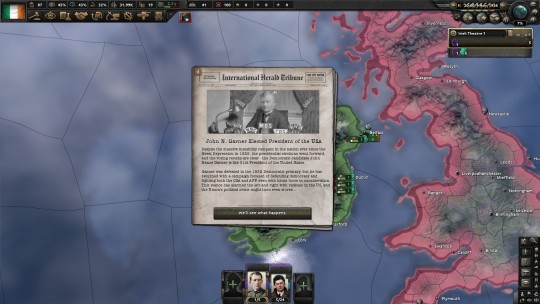
12 February 1937 - Home of Michael Collins, Cork, Ireland
“The United States of America has faced challenges since its founding, but it is an enduring republic. When we were invaded, we fought off our attackers. When the Great Storm hit Galveston, we built cottages from the storm lumber. When Black Monday reached our shores, we passed the Garner-Wagner Act to deliver our people relief. The American people, through this election, have made their will clear. They do not want the empty promises of Jack Reed. They demand more than the sayings of Huey Long. Words are not enough, action is required. That is what I shall promise: action. We will stand firm against the threat of populism and syndicalism.”
Benjamin Franklin, after the Constitutional Convention, was asked whether the United States was a democracy or a republic. His words were: ‘a republic, if you can keep it.’ That was not mere wit, but a charge; a sacred duty given to every citizen. Today we say: it is our republic, and we shall keep it.” -US President John Garner, Excerpt from Inaugural Address
In Michael Collins’s case, war never seemed to have a countdown, but sure enough, the war looked like it would begin in 30 days. Just the thing to ruin his vacation; he had hoped to spend a few days in Cork to recharge his batteries, and ended up having indigestion and headaches the entire trip.
The United States had been a roiling mass of discontent since 1925, but it had only gotten worse during Black Monday. President Garner had won a lot of support in his campaign, which had focused on trumpeting the successes of the Garner-Wagner Act and touting the President’s willingness to fight any who threatened democracy. “A snake is a snake is a snake,” Garner had been fond of quoting on the campaign trail, swaggering with a pair of revolvers. “I plan on working to fix the mess that we’ve found ourselves in. If Jack Reed and Huey Long want their voices heard, I’ll listen to them. If they want prosperity for America, they’ll listen to me. And if they want to fight, they’ll get one. I don’t plan on striking first, but as God is my witness, I’ll be striking last!”
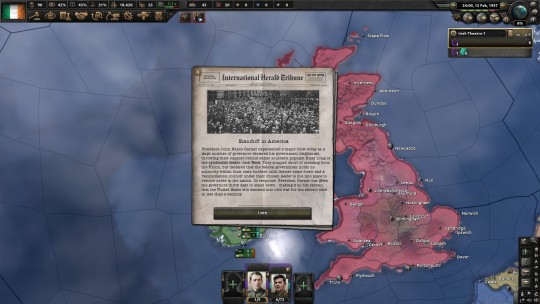
That had been enough for the Presidency. Jack Reed’s Socialist Party of America and Huey Long’s America First Party had strong regional support, but neither movement received enough votes to beat the Republican candidate Alf Landon, let alone Garner. Yet the victory was narrow, and both candidates claimed voting irregularities arranged at the polling places by supporters within the state voting commissions, along with other accusations of beatings and intimidation campaigns. Herbert Hoover endorsed Garner in a show of cross-party American solidarity, and Landon himself was a guest of honor at Garner’s inauguration. Garner had already promised the Republicans some Cabinet appointments in the hopes of building a coalition government strong enough to stop Long and Reed. It was an uphill battle; the 1936 voting season had been marred by political demonstrations turning violent, they had even called it the Red Summer, and now Long and Reed were railing against the legitimacy of the vote.
When the populists had made their accusations, the governors in their regional strongholds had backed Long and Reed. The populists, it seemed, had called President Garner’s bluff. The governors demanded a “national reconciliation council” under their talking head, and both had made it plain that the other would not be welcome on it, making it all but certain that war would come, and it would not be small. Jack Reed was popular in the Steel Belt and Huey Long had an almost religious appeal in Louisiana and in the rest of the Southern United States. Reed had much of the industrial heartland, but Long had far more pull among the military including high ranking officers. It wouldn’t be an easy fight, no matter what Texans had to say. In both ways, it was bad for the United States.
Collins had hoped it wouldn’t be war, but he was sure that it would be. If Jack Reed was able to successfully overthrow Garner, the Internationale would be emboldened. The Communards might still be reluctant to face Germany, given how large such a war would be, but Mosley would almost certainly want to snap up Ireland to carry forth syndicalist momentum. Anti-Irish rhetoric had only intensified in the months following Ireland’s meteoric 1936 rise, with Mosley claiming that Michael Collins had become “every inch the oppressive king he fought against.” Collins laughed when he was first told it, but as the days went on he seethed against the man, wishing he could have five minutes alone in a room with him. He was sure his sainted ma would not look fondly on him for beating on a man with a limp, but she’d forgive him.
When the reporters asked for a quote, Collins was sure to give them one. “Look at Mosley in the war. Gallivanting around in an aeroplane like war was just boys at camp, crashing trying to be a showboat. I suppose I must be kind, he tried to prove he was a brave man, I’m sure it’s not his fault he ran behind a desk before a year was out. That’s where he’s most comfortable, hiding and sipping his gin while he sends young boys to do the fighting and dying.”
Collins had a good laugh, but he made sure to tell his diplomatic service to make sure that Ireland would have plenty of friends on both sides of the Atlantic, just in case the Union tried anything. Laugh in public, but service your pistol in private.
---
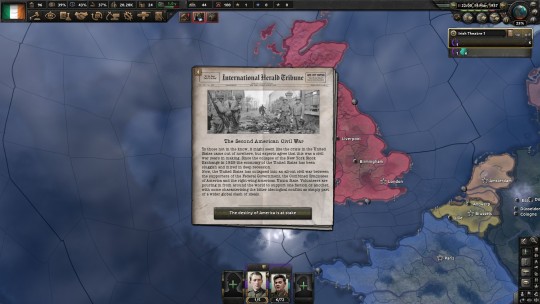
14 March 1937 - Áras an Uachtaráin, Dublin, Ireland
It was war. The entire world was aflutter with the news that the United States had descended into a civil war. President Garner’s deadline had come and went, and both Jack Reed and Huey Long had declared war on the United States. In response, Garner had appointed General George Marshall as Chief of Staff of the Army. The Internationale had already voiced its support for Jack Reed, with Chilean, Communard, and Union supporters already on their way to support the newly-formed Combined Syndicates of America. The German Empire was far more reserved in its support. German-Americans primarily lived in areas controlled by the Combined Syndicates, and the United States government had primarily conducted a pro-Entente policy during the Weltkrieg, leading the Kaiser to support Huey Long out of pure pragmatism. Canada had fallen into debate within the Houses of Parliament on who they were supporting.
Collins had no such reservations about debating who to support in the Dail. Collins had sent out a call for a volunteer division, the 1st Thunderbolts, and had placed them under the command of Daniel McKenna. The East Coast was dense with urban areas, and McKenna was just the man to fight in that difficult urban war, having fought the English in the cities before. The Thunderbolts had been training for months in preparation for the outbreak of hostilities. Most were young men, too young to have seen the Independence War, but their officers and senior NCO’s had. That would carry them, fighting in unfamiliar territory would mean they would have to adapt quickly and rely on the experience of the leaders. Other IRA volunteers, particularly those with families in the United States, had opted to go there themselves, fight in the American army, and return later.
The first target would have to be the syndicalists. With their position in the American industrial heartland, they’d have the manufacturing prowess and the civilian manpower to build and repair war materiel far faster than the mostly rural southern states. They would have to trust in their greater manpower and equipment to hold the southern front against the aggressive generals of the American Union State. The United States had begun mobilizing forces on the West Coast to get them to move east, and requisitioned several rail lines for exclusive military use, but it would be hard fought. America was going to need all the help it could get.
---
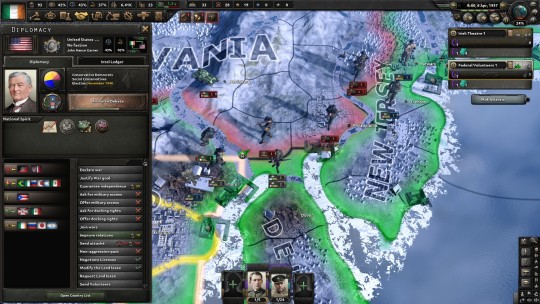
13 April 1937 - Northern Maryland, United States of America
“We have traitors to our left, and traitors to our right
Our Congress and our president have long since taken flight
No ammo, no armor, no pills, no cargo
No prayers, no chance, no hope of tomorrow
Just you and me and a hell of a lot of fight.” -Frank McHewlitt
Pennsylvania had become a battlefield for the Second American Civil War just as it had for the first. The Pennsylvania governor had declared for Jack Reed, but the Federals had made a march into central Pennsylvania, seizing York to Fulton counties, but lack of manpower, difficult terrain, and Communard volunteer tank brigades had ensured any excursion was short-lived. From New York to the Midwest was controlled by the Syndicalists. Fearing being overrun, Joseph Kennedy Sr. had asked Canada to send an occupation force to protect them from the Syndicalists. This had infuriated President Garner, but pragmatists in his Cabinet had argued that the region was indefensible since the Syndicalists held New York, and better that the Canadians occupy it, and the Combined Syndicates risk a war with the Entente, than the factories be taken over by Jack Reed. Further south, Canada had sent a force to occupy the Panama Canal after the Americans had withdrawn their garrison force. The Canadians had said their mission was to protect trade, but had banned ships flying Communard, Union, or Chilean flags.
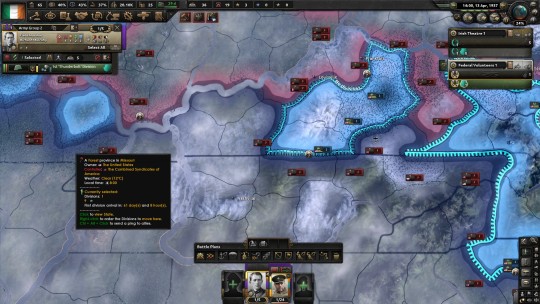
Further south, Texas to the Carolinas, and everything south, had pledged loyalty to Huey Long’s vision. Several companies had even signed on to the “Share Our Wealth” program. His men were heavily-armed and competently led, and they had already made significant inroads pushing north into Kentucky from Tennessee, even making contact with and fighting Jack Reed. George Patton had been named the overall commander of the American Union State, and on land the America First Party had shown themselves to be exceptional fighters pound-for-pound. Their goal had been to push and seize whatever territory they could, to turn the factories over to Longist control and get their war materiel production up to match the Federals and the Syndicalists. It had been remarkably successful, Patton’s armor techniques had run circles against disorganized Kentucky militia and revolutionary syndicalists alike. Already there were unconfirmed reports of mass shootings of CSA prisoners by AUS irregulars. The Federals were hard-pressed, often surrounded and potentially encircled by hostile forces in Kentucky. Only the chaos of the war and the close proximity of all three forces, kept them from being killed outright. Desertions, particularly from militia unfortunate enough to be in the encircled regions, were high.

Washington was no longer the capital. With Maryland under fire and the Firsters pushing from the south into Virginia, Garner had decided to temporarily move the capital to Denver, where he could oversee the political business of state. MacArthur had elected to remain in place as the commander of the East Coast Enclave, suggesting that Dwight Eisenhower take command of the main Federal forces in the Midwest. “He’s a Kansas man, there’s no man better in command from the Midwest. The troops will fight tougher and harder if they know we haven’t abandoned them. Don’t worry, Mr. President. Those bastard traitors won’t set a foot in D.C.” With his trademark corn cob pipe and a wave to the press, MacArthur took a ride on a Vultee V-1 to take up command, with Eisenhower being named the overall commander of Army Group West, with the goal of pushing east from Kansas into Missouri.
MacArthur welcomed the service of the volunteers sailing and landing on the Chesapeake, no traitor forces had been able to ensure naval supremacy on the East Coast and none were willing to risk firing upon a flagged vessel and invite any nation’s full-blown entrance into the conflict. Lavr Kornilov, eager to project strength and stability after the assassination of President Kerensky. Hirohito had also dispatched volunteers citing the strong relationship between the United States and Japan and the need for legitimate government to be re-established in the United States to project stability in the Americas. Calles in Argentina, eager to re-establish the Monroe Doctrine to act as a bulwark against the Patagonian Worker’s Front, and always eager to fight syndicalists. Brazil likewise had ordered troops to support the United States. Mexico, eager to avoid any war spilling over their borders, had closed the borders to the American Union State and had sent divisions through the Gulf of Mexico before the Longist navy could seize control of the waters and potentially cut off trade and transit. MacArthur ensured that each division had several bilingual Americans to serve as liaisons and communications personnel. He couldn’t command the volunteers, but he did demand adherence to military law and that any abuse of US civilians or military personnel would be dealt with by firing squad. Similarly, MacArthur promised his own men that they would be punished harshly if they stole from or fought with Federal volunteers. Regular correspondence was mandatory, and passwords changed regularly to allow foreign soldiers to identify themselves quickly to friendlies, passed via radio operators who had signed up with the Federals in record numbers when President Garner forced a bill and executive order expanding the civil rights of Native Americans to shore himself up for the upcoming emergency. The Navajo Nation, who provided one of the largest units, dispatched signals operators to coordinate with the volunteer brigades, providing exceptional communications security and coordination between the Federals on both fronts.
Yet things were not going well. MacArthur had enforced military law within the East Coast enclave, and garrison forces frequently looked to seize supplies and materiel for their war effort. Oftentimes, a token effort at compensation or promise of restitution to come later was the only balm in Gilead; it did not help those who starved.
The volunteer forces moved north to the Mason-Dixon line, where the Combined Syndicate militia were threatening to move south into Maryland from their regional headquarters in Philadelphia. The Russians opted to secure themselves in Baltimore, while the Argentine and Mexican forces moved to Cecil County to secure Delmarva from the syndicalists seizing the east bank and potentially cutting off vital access to the Chesapeake. McKenna and the Irish 1st Thunderbolt, acting aggressively, crossed into Pennsylvania and secured themselves in York. Not willing to pass up a fight, Russian and Irish volunteer brigades pushed into Lancaster County, threatening Philadelphia and forcing the Communards to reinforce their position lest Philadelphia fall and the road to New York be pushed wide open.
---
17 April 1937 - Economic Committee of the Dail, Dublin, Ireland
It had been a constant flurry of activity in the new year. The Dail was debating loosening immigration restrictions to help bring in new blood to help support Ireland’s effort to modernize. Even if good policy and hard work had led Ireland out of the depression following Black Monday, manpower was still the hard limit on everything they could do. Once unemployment fell, there would be no new employees for businesses, and they’d turn away from Irish investment.
There had been two major sources of pushback against immigration reform. The Unionists in Ulster had been vocal opponents, calling the efforts part of a planned demographic shift to stock the north with people that would sideline their concerns as Unionists. Their proposal had instead suggested an increase in immigration from select countries, notably Canada, Australasia, and the British Dominion of India. Gearóid Ó Cuinneagáin was far more hostile to immigration overall, demanding no immigration save from Celtic-majority countries, particularly those who wished to depart the Union of Britain from Scotland and Wales. Some of the measures proposed had truly been radical, such as instituting a Gaelic language entrance exam to new immigrants. The hAiséirghe crowd had always been a touchy subject, they had enough support in Munster that they couldn’t be ignored as much as Collins wanted to throw the bastards into the ocean.
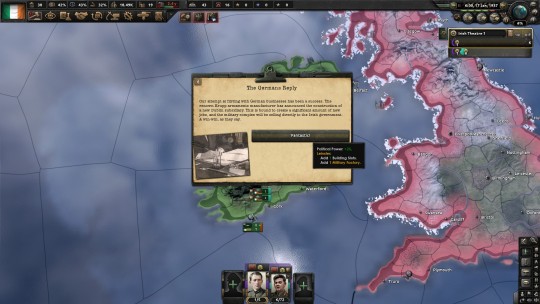
Collins had been lucky, his Dublin financial capital idea had already been receiving positive responses. The German Kaiserreich, still deep within the throes of Black Monday, had debated whether or not to permit German businesses to invest in Ireland. The protectionists in their government had argued that the last thing that they needed to do was open up subsidiary companies in Ireland and send work away from Germans. The market liberals were far more enthusiastic, suggesting that the profits made could be reinvested in Germany; an influx of cash that wouldn’t increase the money supply and devalue the Mark. In the end, Wilhelm II had agreed to the proposal. He had known that the Irish Republican Army had been looking to re-equip their forces, and Krupp could easily manufacture rifles and mortars with a sizable government contract. Krupp opened Krupp Rüstungsbetriebe Irland, redesigning the Krupp Radreifen into the shape of a shamrock.
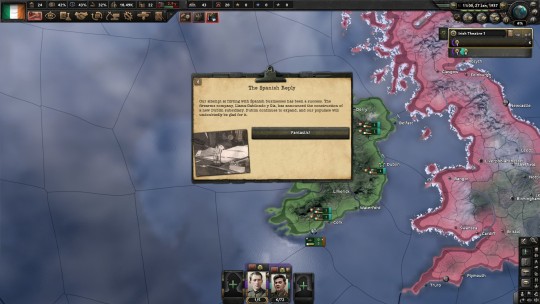
The Kingdom of Spain had also looked to establish an arms company in Ireland, eager to arm those who were also hostile to the syndicalists, and quite isolated on the European continent, with France and the German Protectorate of Morocco making an uneasy set of neighbors. Having a well-armed Irish Republic was a benefit to King Alfonso, who agreed to set up a subsidiary of Llama-Gabilondo y Cia SA, taking the name Dóiteáin-Gabilondo Incorporated, and selling their famous pistols to the Irish Republican Army. With regular army drills, and now a larger armaments industry within Ireland itself, a more significant and professional Irish Republican Army was starting to take shape.
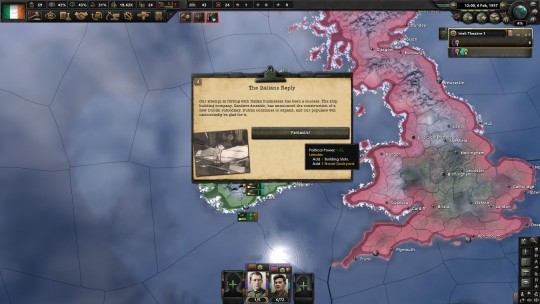
The Italian Republic, floundering in the wake of massive German and Austrian stock selloffs, were eager to find ways to bring in cash and stabilize their own economy. Seeing a pressing need, the Italian Republic opted to establish a naval manufacturing dockyard in Dublin as Gio Ansaldo Irish Sea Shipwright, Ltd, to help produce submarines for the Naval Service. Italian engineers could work in Ireland, the revenue would flow into Italy, and the Irish would receive a powerful deterrent against the Union of Britain’s navy. Working in the choppier northern waters was different from the warmer and calmer Mediterranean, but the Italians proved up to the challenge, christening the first Irish U-Boat the new Fenian Ram.
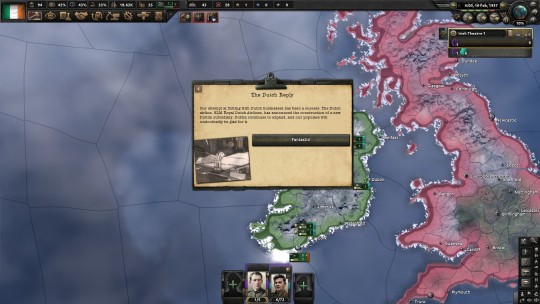
The rush of European activity to invest in Ireland had not gone unnoticed in the Netherlands. After a fierce and competitive bidding war, the Dutch government, very busy with their preparations for the upcoming elections in May, had given the go-ahead for Royal Dutch Airlines KLM to do business within Ireland. Rather than operating a strict subsidiary, as the government was still facing the worst of Black Monday, Royal Dutch instead opened a joint venture with Aer Lingus, operating a civilian airfield that would bring in much needed tax revenue, and providing expertise for the construction of a military airfield in Leinster. The Union of Britain had lodged a formal complaint against the move in the Netherlands, but the ambassador had been dismissed out of hand, the official response being “Ireland has a right to the sky, and Britain has no right to dictate policy to the Netherlands.”
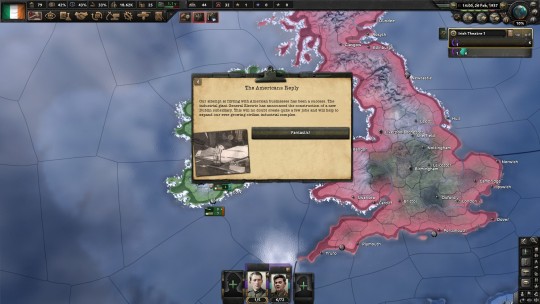
The United States had been considered highly unlikely to invest in Ireland. Even with the positive relationship that had existed between the two countries, the USA had been facing an existential crisis. To Collin’s great surprise, Garner had actually encouraged American companies to open subsidiaries in Ireland before hostilities broke out. In a diplomatic message to the Irish President, Garner had written: “I am certain there will be war. American industry will certainly not be spared. This initiative may save American lives and enrich both our countries. If the worst comes to pass, may God protect us both.” General Irish Electric, as the company titled itself, designed a logo incorporating the Irish harp in the signature “G” of the GE logo. The company received a grant from the National Industrial Investment Fund and purchased a factory abandoned during the Black Monday fallout, bringing up to speed in record time to produce civilian and industrial-grade electronics. Almost immediately, GIE had orders tasked almost to capacity for factories across Ireland to upgrade their own operations, throwing itself into the greater industrialization efforts that Michael Collins had championed the previous year.
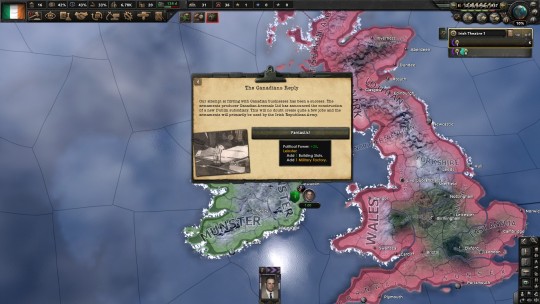
The Dominion of Canada was a much more difficult beast to wrangle. Edward VIII had made no secret that he wished to reacquire not just the British Home Isles, but the British Empire as well; he would not be a second-fiddle to the Kaiser. That would mean the Six Counties, surely, perhaps even re-establishing the Free State as a Dominion. Collins had debated even making the offer to Canada, but a good relationship with Canada was, putting Edward aside, a sound policy. Canada needed money to support their war efforts, and a friendly relationship with Ireland would mean less problems when launching their operation to take back the Home Islands. Collins privately feared that they would want to use Ireland as a staging ground. Ireland had situated itself as a prominent financial hub, and since Dublin was designated a Special Economic Zone, it could potentially be very lucrative and offer a way to sell to the rest of Mitteleuropa without dealing with the Kaiser. The Canadian government had assented to Canadian Arsenals, a crown corporation to open a subsidiary in Dublin named North Atlantic Arms. Collins made sure that it acted in all things as a private company, insisting that King Edward appoint an executive staff the same as any other business. That had been a headache in the Dail, with Eamon de Valera angrily demanding not to sell Irish land to King Edward. Collins had countered that Ireland was a free and independent republic, and that the King had to obey Irish law rather than dictating laws to Ireland.When rumors came around that Jim Larkin had supported Dev’s objections, the Fianna Fail politician withdrew his opposition in favor of a more moderate compromise, asking only that the Dail be presented the terms of the contract in open session so that they could vote on them. Dev’s desire not to give Larkin more ammunition had rapidly diminished opposition to the measure within Fianna Fail, and Sinn Fein offered only a token dissent, permitting the venture to go forward.
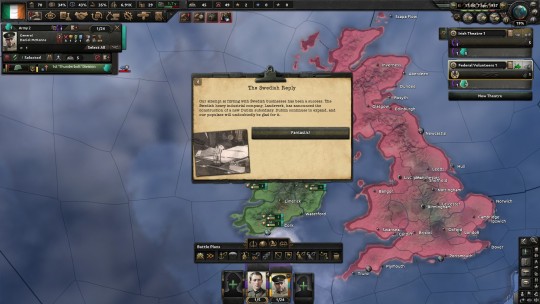
With the outbreak of war in the United States and Ireland’s rapid industrialization, Sweden had sensed an opportunity to open a subsidiary business in Ireland as well. AB Landsverk had originally sought to open a tank manufacturing plant, since the Irish tanks were largely outdated and the Irish Republican Army was going to need to modernize its arsenal. Fierce protest erupted from the social democrats within Sweden’s Parliament, opposing the idea of arming Ireland and facilitating a possible war between Ireland and the Union. The hawks within Sweden had supported the venture, but military arms, even support equipment, could not secure a large enough coalition for the Economic, Defense, and Foreign Ministers to agree to the venture. Not wanting to lose out on the potentially lucrative deal and already facing their own problems with syndicalist unrest, Sweden’s market liberals had offered a compromise within the Riksdag, allowing Landsverk to open Landsverk Inneal, specializing in tractors and harvesting equipment to support the modernization of the Irish agricultural sector. Several prominent military analysts noted that the new Inneal tractors, with a few modifications, looked suspiciously similar to a light tank with the turret removed, but these were dismissed as products of an overactive imagination by both Swedish and Irish military analysts.
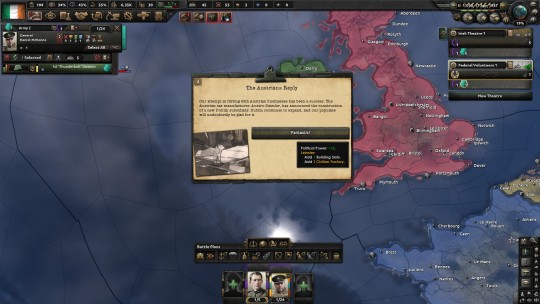
The Austrian Empire was in a difficult position in 1937. Emperor Karl I had been making significant plans for his Ausgleich Federation plans, and saw the Irish initiative not simply as a means to support his economy, but as a means to demonstrate both Austrian power and his willingness and initiative to support cooperation efforts for mutual gain. The Emperor had made his commitment to pluralism plain within his proposed federative model, he had hoped that participating in Collin’s economic initiative would help sway skeptics and naysayers to his side to give him greater support against Hungary. If it could help his economy and put neutral voters who cared more about their own personal livelihood than the greater plans of Austria-Hungary, that was fine as well. Daimler founded Irish-Daimler and focused on developing automobiles and lorries. While the Emperor could not be there in person, he had prepared a statement for the opening of the plant in Dublin. “Irish-Daimler is in the business of Irish business. Her success is our success, and our success is her success. May we both prosper in the days ahead.”
Eight nations had opted to do business with Ireland in such a short period of time, and there had already been murmurs for other nations to do likewise. The success of Irish Black Monday reforms had been the talk of the European financial sector. Even distant Japan had expressed an interest in perhaps opening a branch of one of their zaibatsus in Ireland to sell to Western markets, though such a discussion was in the planning stages. When interviewed by The Financial Times, Lemass had made the quote that had made the headlines. “Ireland is the Emerald Isle. She always sparkled in our hearts, now everyone can see it.”
When Michael Collins had heard that, he smiled. The man had the head of a businessman but the heart of a poet. The head and the heart needed to complement each other if he wanted to see Ireland through.
---
8 May 1937 - Áras an Uachtaráin, Dublin, Ireland
As the war passed into its third month, Collins started to wonder about the upcoming elections in the fall. America had been on his mind a lot lately. An emergency act by the Oirechtas called the Díodean initiative had allowed Americans seeking refuge to come to Ireland, and plenty had taken Collins up on his offer. Many immigrants came with much of their wealth with them, which had provided an influx of capital. Even more valuable, however, was the technical knowledge. Many of the immigrants had been factory managers or entrepreneurs, and they had knowledge which made them highly valuable in the industrial sector. Not every tale was so fortunate, however. Some culture shock was perhaps inevitable, but it had been incredibly slow going. Collins had remembered the first time he saw a new settler to Ireland drive on the wrong side of the road and cause a car accident. This felt like seeing that unfold in slow motion on a national scale. The poor Americans had felt the Irish were cheating them out of wages and exploiting their desperate circumstances, while the wealthy felt their standard of living drop precipitously.
The hAiséirghe crowd again troubled him. Reports of nativist gang uprisings in the poorer parts of cities and rural areas were on the rise. There were demonstrations that the new arrivals were stealing all of the good-paying jobs; this had been going on since the new immigration reform but now was reaching a fever pitch. The Unionists again rallied against Collins, accusing him of colonizing the north with people opposed to King Edward under the guise of humanitarian aid to defeat the Ulster Unionists at the ballot box. They demanded a series of refugee and work permits that did not confer voting rights as opposed to outright immigration and naturalization. That had caused a firestorm on the debate floor, causing no shortage of headaches for Collins.
To alleviate the shortages, Collins had organized refugee brigades in the Republican Army, where young men could earn a wage and provide a livelihood for their families. The Yanks were excellent shots, and Collins had hoped that seeing immigrants wearing a uniform would cause the locals’ respect for the military to undermine nativist tendencies. It was a mild success at best, mostly in Leinster where there had already been fewer problems overall. Collins had weighed outright banning the Ailtirí na hAiséirghe, but that would just send them underground like the Labour Party had. He had to settle for punishing assaults when they were reported, and increasing Gardaí patrols to keep the peace.
In the leadup to the elections, Collins had seen cracks start to form in his ironclad voting bloc. While syndicalism had little popularity in Ireland itself, Sinn Fein had seen an upsurge in popularity with Black Monday despite Collins’s efforts. The Irish Christian Front and the Ailtirí na hAiséirghe had campaigned against him thanks to his immigration policies. Fianna Fail had campaigned on greater liberalization, and the National Centre Party had wanted to re-orient foreign policy to a more pro-Entente position. Sinn Fein and Fianna Fail had opted to engage in tactical voting, with candidates withdrawing from ballot races in order not to split the vote. Jim Larkin had endorsed the move, promising to work with Sinn Fein to provide greater relief to the Irish working class. The Irish Christian Front opted to boycott the elections and both they and the Ailtirí na hAiséirghe accused Collins of bringing in foreign refugees to ensure he had the votes needed to win.

At a closed door meeting, Collins was asked a simple question. “Sir, what should we do about the election?”
Collins, his hands shaking, had only one response. “Whatever it takes.”
---
15 July 1937 - West Virginia, United States of America
“We’re in the right thick of it now, ain’t we?” Daniel McKenna shouted over the din of battle.
The East Coast Enclave had stabilized its borders after the early initial push, but still faced the difficulties of being surrounded by the enemy. Food and water shortages, irregular supply shipments, and losses from attrition were starting to take their toll on the beleaguered Federals. The Appalachian mountains had stymied Syndicalists pushing in from Ohio and Illinois, and the hilly and forested terrain had helped somewhat slow the push by Long’s forces, but only barely. Eisenhower had more success on the west, where the greater manpower has really started to pressure the American Union State on their Texas front.
The Federals still controlled the air though. That had made securing their defenses much easier. Flying over the Great Plains was effectively a death sentence, and few had the nerve to establish air cover on the east coast. That was a small comfort to Dan McKenna, who had gone to the Applachians in response to a new Syndie push. The Federals had retaken Charleston in June, but their position was tenuous there, and with new militia units being sent into battle, someone had needed to defend this key western outpost.
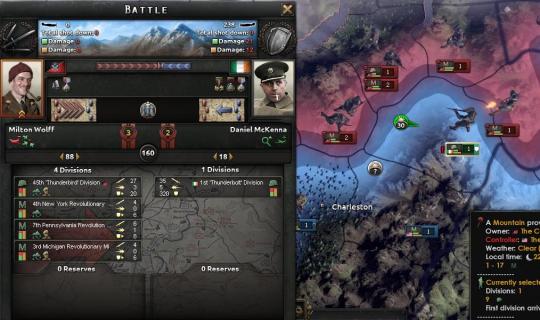
American militia units had stayed to defend the city, but McKenna had looked to secure the hills to the northeast. The Applachian plateau looked to give a good vantage point for artillery if any could succeed in the arduous task of towing them up to that position. Loyalist civilians had offered to do it on their own, pulling the units with their own work trucks, but that would be a dangerous undertaking without escort. McKenna took his Thunderbolts, with their own artillery pieces, to secure the hills first, while the militia guns could follow second when the way had been cleared. The Syndicates, tipped off by sympathetic informants, launched a massive push with their own 45th Thunderbirds, supplemented by local revolutionary forces, to prevent bombardment. The battle plan called for an overwhelming attack to break the dug-in mountain entrenchments, attacking from multiple directions in an attempt to dislodge the stubborn Irish defenders and find a weak spot.
McKenna demanded that the forces hold, using high-explosive burst shells over the heads of the enemy to maximize effect on the enemy. The engineers had dug in extensively, and had used dynamite to blast further fortifications and built entrenchments. The Thunderbolts only had a few guns, which were primarily pointed toward the northwest against the more highly-trained Thunderbirds. At such high elevation, and with such difficult terrain, evacuating casualties was difficult on the mountain, and men sometimes collapsed where they stood due to a combination of fatigue and high elevation.
That had been days ago, and the Thunderbolts were in tatters. The less wounded had even taken up shifts at night, or taking over service positions so able-bodied men could shoot and spot for the artillery. They had been holding, but just barely so. If it hadn’t been a mountain, they would have already been overrun. “I’ll be damned if I die on some cold rock half the world away from home.” McKenna defiantly continued to stand, hoping to wear down the superior numbers with artillery shells. He was the Wall of West Virginia, and he wouldn’t let the bastards through.
---
10 September 1937 - Pittsburgh, Pennsylvania
It had been months of hard fighting. Charleston had remained in Federal hands, and the front had stabilized, but all hopes of recovering the Federals in Kentucky were lost. The loyalists could only hope that the army groups had disbanded to make their way back to Federal territory in smaller numbers rather than being shot en masse, or worse, deserting to fall in with the enemy for their own salvation.
MacArthur had relied on the volunteers to fight a great deal of battles, more than he had preferred. The states under his control were tapped out for manpower resources, and if he started poaching from the factory floors for more able bodies he’d run out of supplies. Supply was irregular, especially for fuel, which he needed to keep the planes in the sky and the troops moving across the front. Olds and Tunner were able to airlift a lot of supplies, but demand always outstripped supply, and the more supplies he lifted the more danger there was for explosions in the cargo holds.
Ultimately, MacArthur decided that he needed to attack, to keep the pressure on the east so that the Syndicalists did not pull more men to prevent Eisenhower from marching toward Chicago from Kansas and the Dakotas. The Syndicates had been attacking south against the American Union State and fortifying out of New York City, and MacArthur had theorized that they would be weak in between those two strongpoints. The Brazilian and Argentine volunteers offered to push toward Philadelphia, with the hopes of breaking the regional command post and sending Syndicalist forces into disarray, while the Irish opted to push into Pittsburgh to seize the valuable steel mills and threaten a push into Ohio. The Mexican volunteers opted to remain in Virginia to help guard the line against the Longists; they had feared if the American Union State won, there may have been calls to expand further south to seize valuable oil and mining territories; fears of the Golden Circle expansion as it was dubbed in Mexico had been a hot button issue for the Mexican volunteers. If the Irish could secure Pittsburgh, that would give them control of the railroad junctions and the rivers, and allow MacArthur to bring in militia units to bring the territory under control with little fighting. With that, they could push further north toward Erie, splitting the Syndicalists and isolating them in New York. With Canada closing the border to the Combined Syndicates, even to the point of having the Royal Canadian Mounted Police arrest suspected border crossers and turning them over to the Federal government in Denver, that would render a similar fate to the lost Federals in Kentucky. MacArthur just hoped that his south could hold against the Firsters. Trading Virginia for Pennsylvania was not a winning proposition.
The B&O Line had been cut early, forcing McKenna and the Thunderbolts to march for most of the trip. Even in September, Pennsylvania was still hot, to help with water and the unfamiliar terrain McKenna had largely followed the Mononghaela river. To the east, he had Federal troops supplemented by Maryland militia moving north to take Harrisburg. McKenna force-marched his troops into Syndicate territory, hoping to secure a clear pathway along the rail lines for American repair crews to fix the B&O.
McKenna had been fortunate, western Pennsylvania had been defended by irregular militia units, poorly armed and lacking artillery support. In many cases, McKenna found that they didn’t have enough rifles for every man and only a few machine guns, some had taken to using shotguns better suited for partridge than men. When he was lucky, a few barrages from the field guns was enough to send them packing, but even without that, a dedicated attack usually was able to force back the disorganized units. A pity he didn’t have tanks, even a couple of old Weltkrieg landships would simply be able to drive to Pittsburgh unimpeded as long as it was gassed up.
The locals were fiercely divided. A few times McKenna had gone near towns, he had been welcomed and told where the Syndicates had kept their ammunition depot. Most of the time, however, the homes were ransacked, the supplies taken. Horror stories came to McKenna about “war syndicalism,” Reed’s name for the efforts taken to ensure his fighting men had the food they needed to fight. Sometimes it was the Combined Syndicates directly, but more often it seemed to be neighbors seizing on old grudges, summarily beating those they suspected of disloyalty and stealing their possessions, donating them to Reed as an act of solidarity. Worse still was what happened to those suspected of disloyalty. The Combined Syndicates offered a bounty on saboteurs and informants, and that had led to hastily-convened People’s Courts, serviced by hanging judges. Even so, there were plenty of people loyal to the Combined Syndicates, shouting their approval at finally destroying the brutal oppressors of Wall Street and their puppets in the Federal government. For a moment, McKenna thought of Ulster, and remembered everything he had heard 15 years before, and then he remembered the refugees from the British Isles after their revolution.
Pittsburgh had been hastily-fortified, with burned out hulks of cars blocking the bridges into town, forcing McKenna to navigate the crude fortifications with great care. The civilian population had largely huddled in buildings with boarded-up windows. The large buildings had been long ago hit by artillery fire or bombings from aircraft. Rail tunnels had been places of safety, McKenna’s scouts had found a few brave souls trading for various materials on picnic blankets. The mayor, who had thrown in his lot with the Syndicalists, had fled the city with the rest of the CSA, and they had thrown those city councilmen loyal to the Federal government into the Ohio. Coordination was largely infrequent, done by amateur radio. The civilians largely wanted to be left alone, out of the civil war, but the war had come to them despite their best wishes.
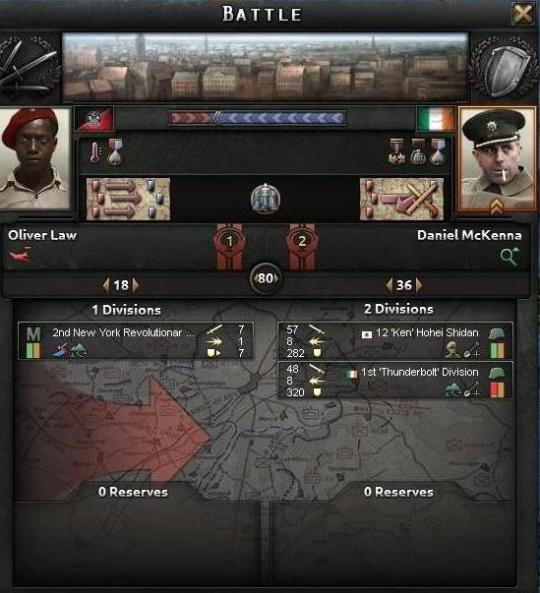
McKenna set to work, ordering his engineering corps to get the guns into firing positions. He positioned men near the Alleghany to prevent any CSA attack using the river to bypass his fortifications, and fortified the major exits with sandbags and machine guns. He had barely gone through half of his fortifications when he had heard the bad news: The Syndies were on the march along the Alleghany, and they would attack the city soon.
Yet, McKenna was not alone. The 12th Hohei Shidan, volunteer forces from far-off Japan, had come to support the Irish forces, and they had brought with them their Type 90’s, doubling McKenna’s supply of artillery. The Japanese and Irish soldiers met on the south side, and drew up plans for an attack. McKenna was given overall command, and elected to put his Irish veterans in the more dangerous forward position while the Japanese would fire on the CSA to draw them in under a battery of withering artillery fire. Once the enemy had descended past Lower Lincoln and could no longer enjoy visibility from Upper Lincoln, the Irish would ambush them in close quarters.

The CSA announced their attack with a radio command ordering all civilians to remain indoors, and all “foreign invaders” to surrender to the 2nd New York Revolutionary Guard, for handling by the legitimate United States government for repatriation. The 12th Hohei Shidan responded with a cannon barrage, thus commencing the Battle of Pittsburgh at 0900 on 10 September. McKenna’s Thunderbolts fought in ambush-and-retreat tactics, dividing themselves into seven-man fireteams. McKenna would fire on advancing CSA forces, retreat into a building, then have a second fireteam flank the New York Revolutionaries from across the street. Casualties were high on both sides, especially among the Irish who often refused to fight until in incredibly close combat, hoping the shock of the ambush would carry the day. Friendly fire incidents were high, especially as the day went into night, both from accidental fire on friendly troops and sympathetic civilians accidentally firing on who they believed were enemy soldiers. Yet the day stood. On 14 September, his squads battered and American troops pushing through central Pennsylvania, Oliver Law reluctantly ordered a retreat to the northeast. Western Pennsylvania stood liberated, but the war was not over yet.
---
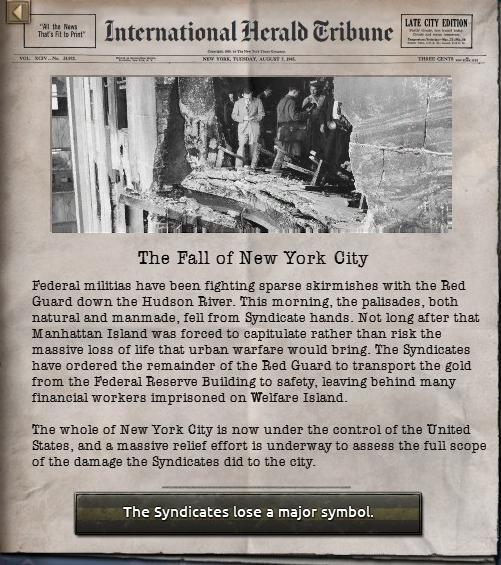
20 December 1937 - Welfare Island, New York City, United States of America
The icy winds of winter were howling, but the pit in Daniel McKenna’s stomach wasn’t from the cold. He had hoped to warm himself with a cigarette as he surveyed the successful conquest of New York City, but that had all left him. Naught but a short time ago, the celebration had been high. The Syndies had lost both a major symbol and, perhaps more pragmatically, their eastern command center. The Dominion of Canada had officially supported the Federal Government, and there had been Canadian, Indian, and French Republican volunteers sailing to Maryland to join MacArthur and the Volunteer Brigades, along with massive shipments of weapons from the Entente. Manhattan had surrendered rather than risk a massive urban brawl amongst the skyscrapers. That too, had seemed like a cause for celebration, but there was little sense of Christmas cheer among those who were picking through the ruins of New York City, for they had finally come to Welfare Island.
Inside, McKenna had found cell after cell of prisoners, skin stretched and hair falling out from starvation and malnutrition, their bodies broken from months of hard labor. When New York had fallen to the Syndicalists, they had imprisoned anyone who had worked in the financial sector, any who rented an apartment to another, or any who they considered to be bourgeoise, and demanded that they atone for the crimes of their previous lives with new, honest labor for the Syndicalist cause. They had been forced into the most dangerous jobs of the arms industry, like manufacturing artillery shells to the point where their skin had turned to a greasy yellow. Bleeding gums and fingers, limbs lost in machinery or explosive accidents were routine, each prisoner was a laundry list of atrocities written out upon their bodies.
Each horror that McKenna heard made him feel numb. He had nearly torn his gloves in two after listening, but he had made sure that he had heard it all, and that his staff heard it as well. A patriotic young woman, formerly a social columnist for the New York Tribune who had signed on to help with the support staff, volunteered to transcribe every word. “Be damned, lass, you’re a damn sight braver than any fella. Write it down, every bloody word, and know that ye’ve got a ironclad heart three times larger than any bastard who tells ye different.”
McKenna had dispatched three messages from New York. The first was to General MacArthur, who had said: “Am pleased to deliver to you New York as an early Christmas present.” The second was to Michael Collins, relaying a request for more reinforcement of men and materiel. The third, a private correspondence, bemoaned what he had seen. “The brutality of what I’ve seen is beyond words, and the only thing that breaks me more is the thought that this is not some singularly unique moment of malice, that we’ll find another Welfare Island in the South run by those America First bastards. God help me, is this what we left the English to in ‘25? Did we look at an Englishman for all those years and see the English and not the man?”
“Private. Bring all the Syndie prisoners we’ve got, make them see what went on here, make ‘em stare at each one. If they look away, hit ‘em. Then find the officers, and see which ones knew about it. And if ye find one that did...hang ‘em from the Brooklyn Bridge.”
---
Alright, that’s the second chapter, with the Syndicates on the ropes and the Firsters being slowly ground down in the western theater. The third chapter will handle the defeat of the Syndicalists and the Firsters and Mosley’s opening shots for his invasion of Ireland. Let me know what you think. And yes, I know some of the pictures are from 0.12, I’ve already mentioned that in my first post on the topic, and I know the battle map is crude; I suck at art. Also, what do you think about cropping the screenshots to make them easier to read? I think it looks fine, not too pixelated or zoomed in, but it does lose the sort of authentic “AAR screenshot” feeling. Which do you prefer, readers?
Images
Cactus Jack Becomes President
Standoff in America
Second American Civil War Begins
Battle of Baltimore
Encircled Federal Troops in Kentucky
US Moves the Capital to Denver
Germany Approves the Irish Business Initiative
Spain Approves the Irish Business Initiative
Italy Approves the Irish Business Initiative
The Netherlands Approves the Irish Business Initiative
The United States Approves the Irish Business Initiative
Canada Approves the Irish Business Initiative
Sweden Approves the Irish Business Initiative
Austria Approves the Irish Business Initiative
Rigged 1937 Election
The Wall of West Virigina
The Battle of Pittsburgh
Pittsburgh Battle Map
The Fall of New York
-SLAL
22 notes
·
View notes
Photo

Oswald Mosley and his wife fishing with Franklin D. Roosevelt, February 1926 [1800x2297] Check this blog!
3 notes
·
View notes
Text

“Hey it’s MOSTLY!”
Day 3 - Franklin Mosley, Gabriel’s best friend since childhood,I LOVE his and Gabriel’s dialogue it’s really entertaining. I will upload his symbol later but I chose a dog for his loyalty. He tries his best as a police officer but apparently his higher ups took notice and made him a CIA agent! I didn’t really change his overall design as I liked how he looked in both the first and third games. Kinda wish we got to see his reaction to werewolf!Gabriel though
2 notes
·
View notes
Text
Sphynx 7/14 Beatles Week
The Fab Four Through the Looking Glass, set one. I particularly enjoy the Miami Latin spin on Yellow Submarine, and the funk treatment of Taxman.
Giacomo Bondi - Doctor Robert
The Piano Guys - Yesterday
The Bar-Kays - A Hard Day's Night
Ella Fitzgerald - Got to Get You into My Life
Tim Thornton - Here There and Everywhere
Aretha Franklin - Eleanor Rigby
Saxofourte - And Your Bird Can Sing
Jazzystics - Get Back
Brazilian Tropical Orchestra - Help!
Fats Domino - Lady Madonna
Al Di Meola - Strawberry Fields Forever
Miles Mosley - Lovely Rita
Dana Gonzales - Nowhere Man
Los Mariachis - Penny Lane
Junior Parker - Taxman
Ella Fitzgerald - Hey Jude
Willy Chirino - Yellow Submarine

1 note
·
View note